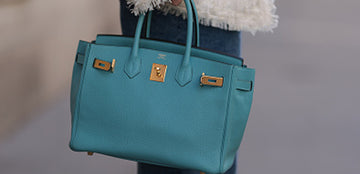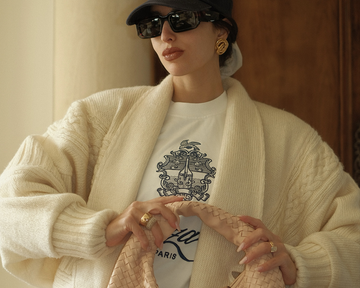
Here at Open for Vintage, we are proud to offer an authenticity guarantee on every product, ensuring you can shop with confidence, and our collection of Rolex watches are no exception. However, this promise of authenticity can’t always be said for the wider vintage marketplace. When it comes to buying a Rolex, there is a number of criteria to look out for when identifying whether the watch is real or not. Our team have put together a comprehensive guide to equip you with as much information as possible to ensure you can buy with certainty, and sift out the fakes.
Rolex is one of the most well-known, and recognised brands on the planet, renowned for their extremely high-quality timepieces, innovative mechanisms, and attention to detail. They also design, develop and produce all essential components in-house. Manufacturing between 700,000 and 1,000,000 watches each year, the heritage brand has consistent demand, however, this appetite has created a business for counterfeits too, which are being made to an increasingly high standard every year.
With the value of Rolex watches on the rise, and the increasing growth of timepieces made in the fake market, it is becoming more and more vital to ensure authenticity when buying your Rolex from a third party seller. Read our expert advise on things to look out for when making your purchase.
Weight:
Genuine Rolex’s have a solid, more weighted feel, due to the metal used to manufacture the watches. Fake Rolex’s are generally lighter and less sturdy. However, a vintage Rolex can become quite flimsy as the links in the bracelet can become loose over time. If you’re unsure whether your Rolex watch is vintage, or a fake, it’s best to get it independently authenticated in case.
Caseback:
A Rolex’s case back is almost always plain metal. Unless you are buying one of the few rare 1930’s Rolex’s which feature a see-through glass back, your watch should feature a metal case back.

Genuine, clear Rolex case back. (Credit: Rolex)
Genuine Rolex case backs are almost always free of engravings and should be completely smooth, apart from a few rare exceptions which will feature engravings – the Sea Dweller, the Milguass, COMEX & Military watches. If you are buying second hand, a previous owner could have had the case back personalised and engraved, and the seller should be able to confirm this for you.
Until 2007, Rolex models were sold with a hologram-encoded three-dimensional sticker on the case back. The sticker has a Rolex crown positioned above the watch case reference number, and when viewing the sticker at different angles the background pattern should change. Rolex discontinued these stickers when counterfeiters got better at producing them, so if the watch is being sold as ‘new’ and produced later than 2007, the watch is fake.
Dials, Hands & Finishing’s:
On a real Rolex, the green GMT hand is sandwiched between the hour and the minute hand. The GMT hand on a fake Rolex often isn’t and sits close to the dial.
The second hand on the watch should sweep smoothly around the watch face, however, if the watch is fake then the hand will ‘jump’ more (excluding Oysterquartz watches). Additionally, a real Rolex does not tick.
The winding crown on the side of the watch (at the “3”) should have engravings and grooves that are finely crafted and can be felt by the touch. Fake Rolex’s normally have a more basic looking crown.
The printed lettering on the dial should be very clean and precise. If there are uneven fonts or inconsistencies – it is fake.
Cyclops:
The Cyclops is a magnification glass window above the date on the watch face. A real Rolex magnifies the date by 2.5%, and the date should take up the entire bubble, completely centred. Most counterfeit Rolex’s do not magnify the date to the same degree, making the date more difficult to see. Often, the date isn’t perfectly centred in the bubble in a fake watch.
Metal Quality:
A real Rolex is either stainless steel, 18k gold or platinum. Rolex do not make 14k gold or gold-plated watches. If the watch is faded gold, or has metal showing beneath the gold, it is fake.
Serial Number & Model Number Engravings:
The Rolex’s model number should be etched between the lugs at 12 o’clock and the serial number should be etched between the lugs at 6 o’clock. After 2005, Rolex started to engrave the serial number on the inside bezel under the crystal at 6 o’clock. These numbers should be very clean and sharp. A fake watch’s model and serial numbers won’t be as clean and will have a sandy-like appearance. When buying a Rolex, look up the model number so you can see if it correctly corresponds to the watch you have. Counterfeiters often use the same reference and serial numbers on many different styles of watch they create – genuine Rolex’s model numbers will correspond to specific models, and each will have its own unique serial number.
Micro-etched Crystal:
In 2002, Rolex started micro-etching a tiny crown logo at the 6 o’clock position on the crystal that protects the dial, so if you’re looking to buy a Rolex made from 2002 onwards, look for this marking for authenticity. It is difficult to see to the naked eye without using a magnifying glass.
Water Resistance:
Rolex’s are built to be waterproof – so fakes won’t withstand a water pressure test. This test is best to be left with a reputable professional, in case you damage the watch and then it cannot be returned.

1960s Rolex Oysterdate Precision Automatic Watch
A Rolex watch is made to perfection. So, in general, if the watch seems slightly lower quality, has small imperfections or isn’t completely ‘crisp’ - it will be fake. If in doubt, always get the watch authenticated independently before buying.
Browse our full collection of genuine, vintage Rolex watches.
Thinking of investing in a vintage Rolex watch? Read our beginners guide.
We also have a Vintage Watch Care Guide, to help you get the most from your vintage watch.






